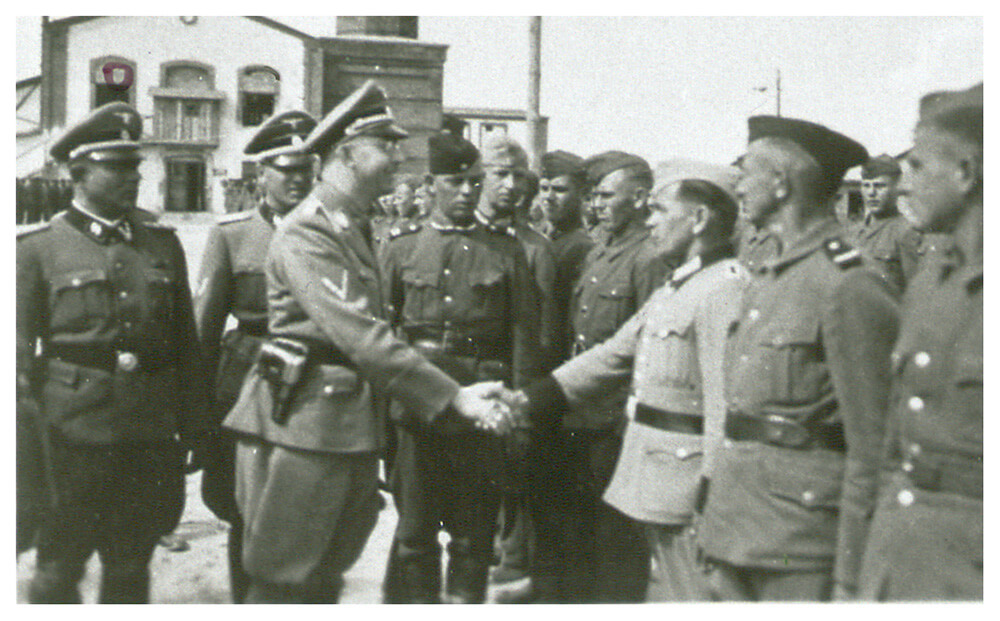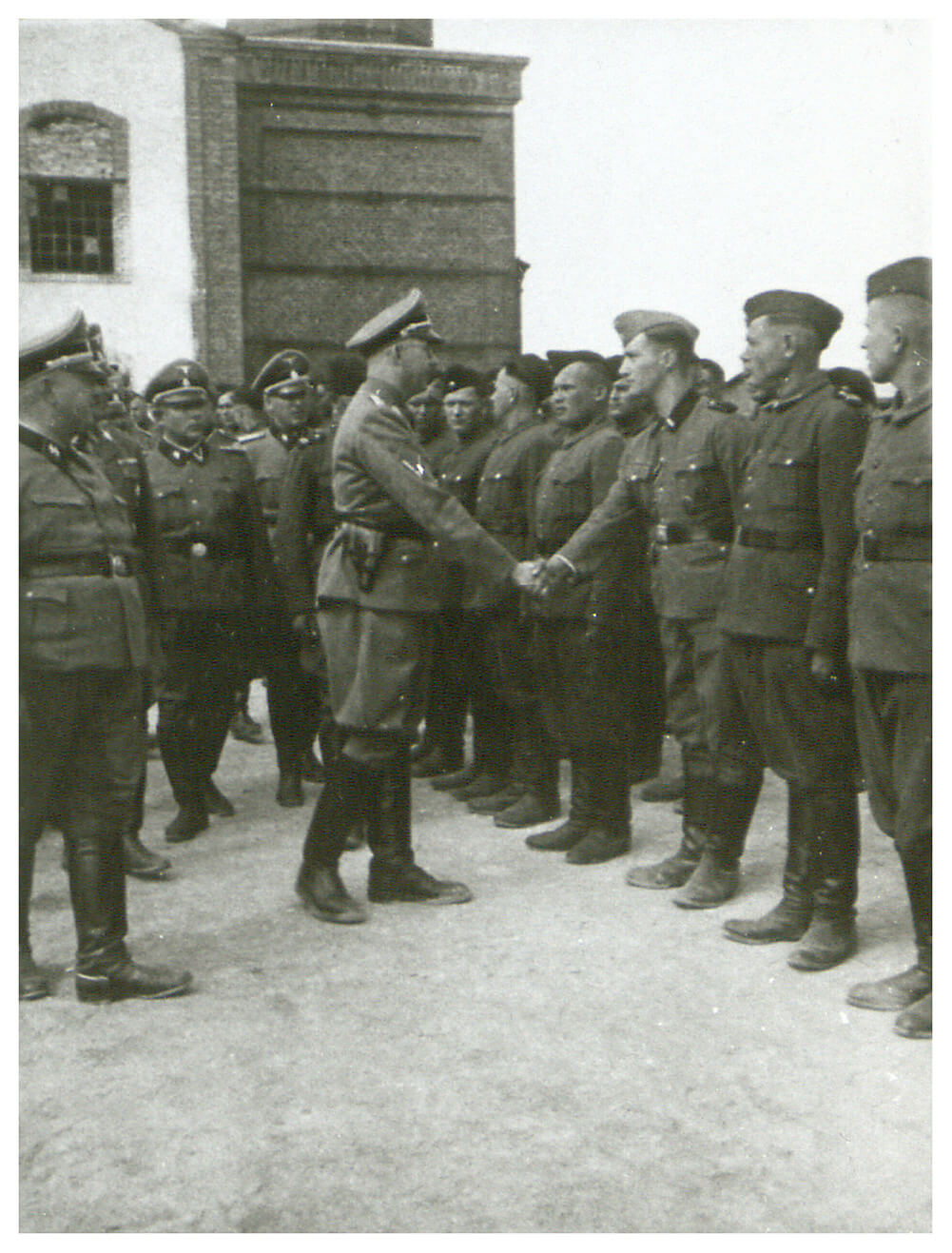Trawniki
The Nazis initially set up a prison camp for Soviet prisoners of war and Poles, which later became an SS “labour education camp”. Several thousands of men and women went through the harsh training there, including Russians, Ukrainians, Latvians, Estonians and, above all, ethnic Germans – referred to as Trawnikis, Hiwis or Askaris. They were employed as guards in the ghettoes and extermination camps and accompanied the transports of Jews. Most of them were renowned for their cruelty. In the spring of 1942 a labour camp was set up on the grounds of a former sugar factory, although it was not adapted to receive entire transports. A number of transports merely passed through this camp. Selections were held there, luggage was taken away and the prisoners continued on their journey; some went to the ghettoes and labour camps in the area, while the rest were sent to the extermination centres. The groups of prisoners who stayed there were put to work in a brush factory and in various workshops belonging to the Warsaw-based firm Fritz Schulz. They included tailors, furriers and shoemakers; the products they made were intended mainly for the Wehrmacht. The camp was liquidated as part of the “Erntefest” (Harvest Festival) operation on 3 and 4 November 1943. A group of prisoners was later sent there from Majdanek to bury the body remains and to wipe out all traces of the camp.
Trawniki was also a transit station for two transports from the Terezín ghetto: Ag (1 April 1942) and Al (23 April1942). Postcards sent by prisoners from other transports are the only evidence of their being in this labour camp. Only five of the 1,994 deportees survived.



